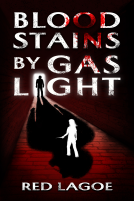
Mr Hogarth’s Morning
by Thom Braun
This title was previously available on NetGalley and is now archived.
Send NetGalley books directly to your Kindle or Kindle app
1
To read on a Kindle or Kindle app, please add kindle@netgalley.com as an approved email address to receive files in your Amazon account. Click here for step-by-step instructions.
2
Also find your Kindle email address within your Amazon account, and enter it here.
Pub Date 28 Nov 2024 | Archive Date 9 Dec 2024
Troubador Publishing Ltd. | Troubador
Talking about this book? Use #MrHogarthsMorning #NetGalley. More hashtag tips!
Description
When Kitty falls to her death in one of Covent Garden’s seedier tenements at the end of 1735, it’s seen as an unfortunate accident. But the memory haunts the nightmares of Kitty’s neighbour, Jeremiah Potts. Jeremiah scrapes his own poor living by running errands for local artists, the most famous being William Hogarth – seemingly unstoppable since the success of his Harlot’s Progress. Hogarth has started work on a new painting that shows a woman walking across Covent Garden Piazza. The image raises immediate questions for the artist’s wife, Jane – but also appears to hark back to something in her husband’s past.
A similar, half-forgotten history torments another local resident, Prudence Hyssop, who is determined that the New Year of 1736 should signal a fresh start. Meanwhile, gentleman-painter Jonathan Smallow has one thing only in mind. Murder.
In a fast-moving tale of lost innocence, thwarted ambition, artistic skulduggery, and blind passion, the lives of Jeremiah, Prudence, Smallow, and the Hogarths are thrown together in new and unforeseen ways. Set against the vibrant backdrop of Covent Garden, Mr Hogarth’s Morning paints a compelling picture that blends dark desires with colourful comedy to create a totally new and unforgettable view of eighteenth-century London.
A Note From the Publisher
Available Editions
| EDITION | Ebook |
| ISBN | 9781836286509 |
| PRICE | £5.99 (GBP) |
| PAGES | 432 |
Available on NetGalley
Featured Reviews
 Librarian 1081599
Librarian 1081599
Beautiful historical novel with lots of rich layers and character development. Not my usual genre but could help being pulled in by this story. Perfect for a warm winters night to curl up with.
I really enjoyed the historical fiction element to this book, it had that element that I wanted and was engaged with the world. The characters were everything that I was looking for and enjoyed going through this story. The plot had that element that I was looking for. Thom Braun wrote this perfectly and was glad I read this.
 Fran E, Reviewer
Fran E, Reviewer
“Don’t judge a book by its cover”, that said, the shaded and nuanced blue cover of Thom Braun's historical novel, “Mr. Hogarth’s Morning” surprisingly resonated with this reader providing a rich “written tapestry” of the world of 1730’s London. The Covent Garden Piazza was the centerpiece of the tome which showcased the greed and depravity of the times.
On one side of the piazza stood a tall, thin house containing four floors, one room per floor. The narrow stairs without a railing created a veritable death trap. One renter had frequent gentlemen callers at all hours, especially at night. Across the square stood an imposing mansion. In the daytime, vendors sold fruits and vegetables at the market. Dr. Rock “supplier of patent remedies” said that “a man might quaff my Very Special Cathartic Antivenereal Electuary…in excess…a poison…a treatment for the pox might be the means for murdering a man.”
Across the street was Tom King’s Coffee House. By day, bitter coffee was served. When the market closed, the chaos of the night ramped up in the taverns and bagnios. Tom and Moll King’s Coffee House coffers benefitted handsomely, in the wee hours, long after the taverns closed. The coffee house catered to heavy drinkers and boisterous clientele including William Hogarth and other local painters.
Covent Garden was a study in contrasts; impropriety versus moral piety. A prim woman accompanied by her ward and on her way to St. Paul’s Church might cross paths and witness the lewd behavior of gentlemen and their harlots, beggars and paupers warming themselves by a fire or hungry children in tattered clothing. How unusual to note that Tom King’s Coffee House was across the square from the St. Paul's Church!
A New Year…1735! Prudence Hyssop was ready to journalize her private thoughts, a way to perhaps address unfortunate events from her past. Prudence’s storyline alternates with the struggle for artistic excellence between Hogarth and his nemesis, Jonathan Smallow. Two short squat men; Smallow had “an air that was unmistakingly bumptious. He …was well dressed.” Hogarth was a masterful painter despite being slovenly and uncouth.
Newlywed Belinda Ransome was focused on establishing a grand “West End” establishment in St. James Square to create “a harmonious impression of abundance”. Her husband, Sir Marmaduke Ransome was a beastly womanizer. Faults aside, portraits of Belinda and Marmaduke gracing their walls could be shown to visitors who were sure to request a tour of the opulent dwelling. Although William Hogarth was a hugely successful painter and engraver, Marmaduke cut corners by hiring so-called “gentleman painter”, Jonathan Smallow. Smallow’s agenda: do whatever it takes to ruin Hogarth. Enter a trio of women, a conveyor of artists’ materials, and a young teen who “noticed things.” The risk of piracy and shady artistic practices would generate possibilities of impending doom.
The presence of Prudence Hyssop, known by all, was the glue that bound the protagonists together. Prudence’s Great Aunt had moved into Covent Garden Piazza after inheriting her arcaded house, in perpetuity. It had passed on to Prudence. Prudence felt that goodness was rooted in Christian tradition in what was otherwise a “manifestly wicked world.” Could her involvement ward off disaster?
Author Thom Braun has written an all encompassing, satirical view of 1730’s London. I was enchanted by the richly detailed, flawed protagonists.
Highly recommended.
Thank you Troubador Publishing Ltd. and Net Galley for the ARC in exchange for an honest review.
Readers who liked this book also liked:
John Galsworthy, Shaun McKenna, Lin Coghlan
Entertainment & Pop Culture, Literary Fiction, Romance


















